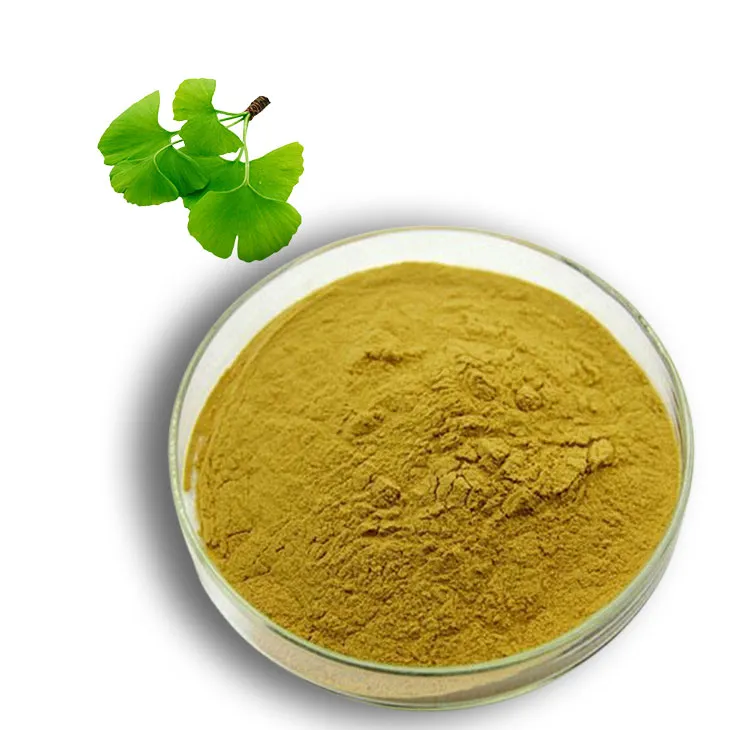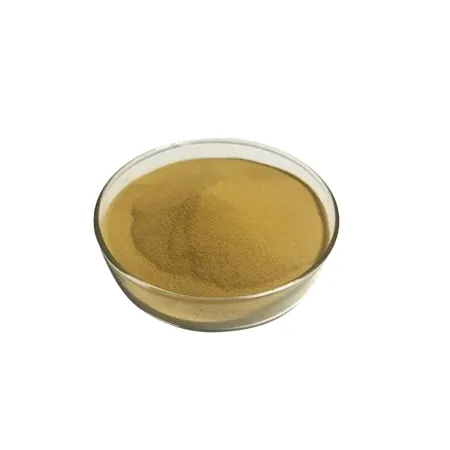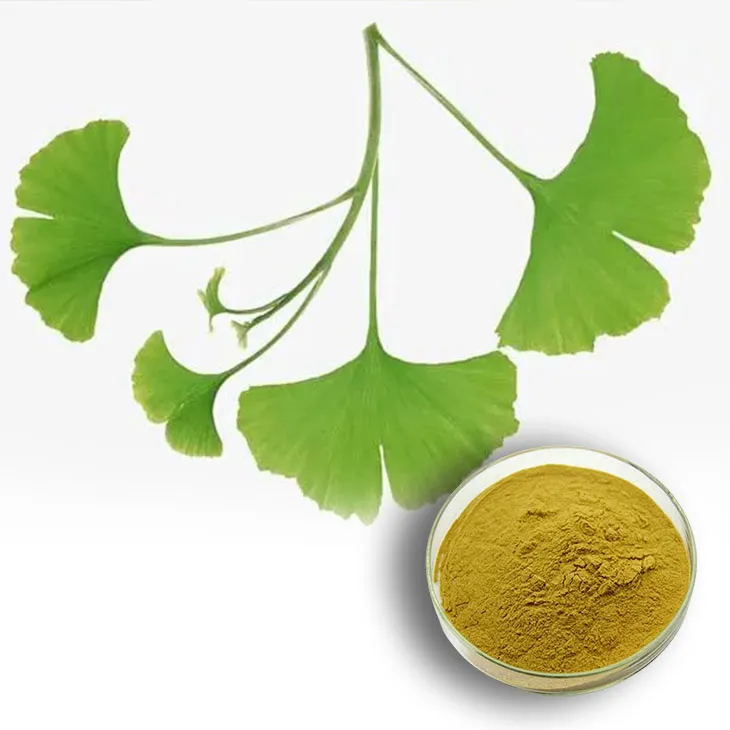- 0086-571-85302990
- sales@greenskybio.com
Ginkgo biloba extract: China vs. the United States
2024-11-29

1. Introduction
Ginkgo biloba, often referred to as a "living fossil," has a long history of use in both China and the United States, but in different ways. This article will explore the differences in raw material sources, manufacturing processes, and therapeutic applications of ginkgo biloba extract in these two regions. It will also analyze how cultural, scientific, and economic factors have influenced these differences.

2. Raw Material Sources
2.1 China
In China, ginkgo biloba has been part of traditional medicine for centuries. The raw material for ginkgo biloba extract is mainly sourced from domestic ginkgo trees. China has a large number of ginkgo trees, especially in some regions where they are cultivated on a large scale for various purposes, including the production of traditional Chinese medicine.
The traditional Chinese medicine approach often values the whole plant or specific parts of the plant. For ginkgo biloba, the leaves are commonly used. These leaves are carefully harvested, usually following traditional agricultural practices. In some areas, small - scale farmers may also contribute to the supply of ginkgo biloba leaves. The quality of the raw material may be related to factors such as the variety of the ginkgo tree, the soil and climate conditions in the growing area, and the harvesting time.
2.2 United States
In the United States, the raw material sources for ginkgo biloba extract also include ginkgo trees. However, the cultivation and sourcing patterns are different. The United States may import some ginkgo biloba raw materials from other countries, in addition to domestic production.
Some ginkgo biloba trees in the US are planted in botanical gardens, research institutions, or on a small - scale commercial basis. The focus on raw material quality in the US may be more influenced by modern agricultural and scientific standards. For example, strict quality control measures may be applied to ensure the purity and consistency of the raw material, such as testing for contaminants and ensuring proper identification of the plant species.

3. Manufacturing Processes
3.1 China
In China, the manufacturing process of ginkgo biloba extract often incorporates traditional knowledge and techniques passed down through generations. Traditional Chinese medicine manufacturing processes may include steps such as cleaning, drying, and sometimes preliminary processing according to traditional prescriptions.
Modern manufacturing techniques have also been gradually integrated. For example, extraction methods may use solvents like ethanol to obtain the active components from the ginkgo biloba leaves. However, compared to the US, the manufacturing process in China may still retain more elements of traditional medicine, such as the combination of different parts of the plant in a certain proportion according to traditional medicine theories.
3.2 United States
The manufacturing process in the United States is more focused on modern pharmaceutical manufacturing standards. It emphasizes scientific research - based methods, with strict quality control and standardization at every step.
Advanced extraction and purification techniques are often employed to isolate specific active ingredients from ginkgo biloba. For example, high - performance liquid chromatography (HPLC) may be used to purify and analyze the components. The US manufacturing process aims to produce a more standardized and consistent product in terms of the content of active ingredients, which is more in line with the requirements of modern Western medicine.

4. Therapeutic Applications
4.1 China
In China, ginkgo biloba extract has a wide range of applications in traditional medicine. It is often used to improve blood circulation, especially in treating symptoms related to poor blood flow, such as dizziness and numbness of limbs.
According to traditional Chinese medicine theories, ginkgo biloba can also have effects on tonifying the kidney and lung. It may be used in some prescriptions for treating chronic diseases related to the deficiency of kidney and lung functions. In addition, in some folk remedies, ginkgo biloba extract is used for anti - aging purposes, although the scientific evidence for this aspect is still being explored.
4.2 United States
In the United States, the therapeutic applications of ginkgo biloba extract are mainly based on modern scientific research. One of the main areas of focus is its potential cognitive - enhancing effects, such as improving memory and concentration in the elderly or those with mild cognitive impairment.
There have also been studies on its antioxidant properties and its potential role in preventing certain cardiovascular diseases. However, the US regulatory authorities have strict requirements for making health claims related to ginkgo biloba products, and only products that meet certain scientific evidence criteria can be marketed with specific therapeutic claims.

5. Cultural Factors
5.1 China
China's long - standing use of ginkgo biloba in traditional medicine is deeply rooted in its cultural heritage. Traditional Chinese medicine has a holistic view of the human body and health, believing that the balance of the body's internal environment is crucial.
Ginkgo biloba, as part of traditional Chinese medicine, is used not only to treat symptoms but also to adjust the overall balance of the body. This cultural concept has influenced the way ginkgo biloba extract is used, studied, and perceived in China. People in China are more likely to accept ginkgo biloba products based on traditional medicine theories and experiences.
5.2 United States
In the United States, the culture of modern Western medicine prevails. There is a greater emphasis on evidence - based medicine, which requires scientific research to prove the effectiveness and safety of drugs or supplements.
The cultural background in the US makes people more skeptical about products without sufficient scientific evidence. For ginkgo biloba extract, it needs to go through rigorous scientific research and meet regulatory requirements to gain acceptance in the market. This cultural difference has led to different development paths for ginkgo biloba extract in the US compared to China.
6. Scientific Factors
6.1 China
In China, scientific research on ginkgo biloba extract has been gradually integrating modern scientific methods while also drawing on traditional medicine knowledge. However, compared to the US, the scale of scientific research investment may be relatively smaller in some aspects.
Chinese researchers may focus on exploring the compatibility of ginkgo biloba with other traditional Chinese medicine ingredients based on traditional medicine theories, as well as verifying the traditional therapeutic effects from a modern scientific perspective. But in terms of international - level high - tech research methods, such as large - scale genomic and proteomic studies related to ginkgo biloba, there may be a certain gap compared to the US.
6.2 United States
The United States has a strong scientific research base in the field of pharmacology. For ginkgo biloba extract, US researchers tend to use advanced scientific techniques to study its molecular mechanisms, active ingredients, and potential drug targets.
The scientific research in the US is more likely to be carried out in large - scale research institutions and pharmaceutical companies. They have more resources to conduct in - depth studies on ginkgo biloba, which has promoted the development of ginkgo biloba extract in the direction of modern pharmaceuticals in the US.
7. Economic Factors
7.1 China
In China, the economic model related to ginkgo biloba extract is influenced by the traditional medicine industry. There are a large number of small - and medium - sized enterprises involved in the production and sales of ginkgo biloba products, which contribute to local economic development in some areas where ginkgo trees are planted.
However, the economic value of ginkgo biloba products may be relatively dispersed due to the large number of producers and different product qualities. The price of ginkgo biloba products in China may also be affected by factors such as raw material supply, production costs, and market competition, and there may be a relatively wide price range in the market.
7.2 United States
In the United States, the economic aspect of ginkgo biloba extract is more related to the modern pharmaceutical and supplement markets. Large pharmaceutical companies may be involved in the research, development, and production of ginkgo biloba - based drugs or supplements, which often require high - cost R & D investment.
The price of ginkgo biloba products in the US market may be relatively high, especially those products with high - quality manufacturing processes and scientific research support. The economic model in the US also encourages companies to focus on patent protection and market monopoly to ensure economic returns on their R & D investments.
8. Conclusion
The differences in raw material sources, manufacturing processes, and therapeutic applications of ginkgo biloba extract in China and the United States are influenced by multiple factors, including cultural, scientific, and economic factors. China's traditional medicine - based approach and the US's modern pharmaceutical exploration each have their own characteristics. As global scientific communication and cooperation continue to develop, there may be opportunities for the two regions to learn from each other in the development of ginkgo biloba extract, promoting the further exploration of the potential of this ancient plant in the fields of health and medicine.
FAQ:
Question 1: What are the main differences in raw material sources of Ginkgo biloba extract between China and the United States?
In China, Ginkgo biloba trees are widely distributed. Many raw materials may come from traditional cultivation areas where the trees have been grown for a long time in a more natural or traditional agricultural setting. In the United States, raw materials also come from cultivated Ginkgo biloba trees. However, the cultivation may be more influenced by modern agricultural techniques and management systems. Additionally, China may have a greater variety of local Ginkgo biloba varieties used as raw materials compared to the United States.
Question 2: How do the manufacturing processes of Ginkgo biloba extract differ between China and the United States?
In China, traditional extraction methods passed down in traditional medicine may still play a role in some small - scale or traditional medicine - oriented production. However, modern pharmaceutical manufacturing techniques are also widely adopted. In the United States, the manufacturing process is often more standardized and regulated according to modern pharmaceutical industry norms. The US may place more emphasis on high - tech extraction and purification methods to ensure the consistency and quality of the extract, such as advanced chromatography techniques for purification.
Question 3: What are the main therapeutic applications of Ginkgo biloba extract in China?
In China, Ginkgo biloba extract has a long - standing use in traditional medicine. It is often used for improving blood circulation, which can be beneficial for various conditions related to poor blood flow such as dizziness and some cardiovascular problems. It is also sometimes used to enhance memory and cognitive function, which is in line with the traditional view of maintaining overall health and vitality through herbal remedies.
Question 4: How does the US explore the therapeutic applications of Ginkgo biloba extract?
In the United States, the exploration of Ginkgo biloba extract's therapeutic applications is more based on modern scientific research methods. There have been studies on its potential effects on cognitive decline, including in patients with Alzheimer's disease. It is also investigated for its antioxidant properties and potential role in preventing or treating certain vascular diseases through a scientific approach that involves clinical trials and in - vitro studies.
Question 5: How do cultural factors influence the development of Ginkgo biloba extract in China and the United States?
In China, the long - standing tradition of using herbs in medicine has led to a natural acceptance and continuous exploration of Ginkgo biloba extract within the framework of traditional medicine. It is deeply rooted in the cultural concept of holistic health and the use of natural remedies. In the United States, the culture of evidence - based medicine prevails. The development of Ginkgo biloba extract is more likely to be driven by scientific evidence and the need to meet the standards of the modern pharmaceutical industry.
Related literature
- Ginkgo biloba Extract: Traditional Use and Modern Research in China"
- "The United States' Approach to Ginkgo biloba Extract in Modern Pharmaceutical Research"
- "Cultural Influence on the Therapeutic Use of Ginkgo biloba: A Comparative Study between China and the United States"
- ▶ Hesperidin
- ▶ Citrus Bioflavonoids
- ▶ Plant Extract
- ▶ lycopene
- ▶ Diosmin
- ▶ Grape seed extract
- ▶ Sea buckthorn Juice Powder
- ▶ Fruit Juice Powder
- ▶ Hops Extract
- ▶ Artichoke Extract
- ▶ Mushroom extract
- ▶ Astaxanthin
- ▶ Green Tea Extract
- ▶ Curcumin
- ▶ Horse Chestnut Extract
- ▶ Other Product
- ▶ Boswellia Serrata Extract
- ▶ Resveratrol
- ▶ Marigold Extract
- ▶ Grape Leaf Extract
- ▶ New Product
- ▶ Aminolevulinic acid
- ▶ Cranberry Extract
- ▶ Red Yeast Rice
- ▶ Red Wine Extract
-
Coix Seed Extract
2024-11-29
-
Konjac Powder
2024-11-29
-
Yohimbine Bark Extract
2024-11-29
-
Kupilu Extract
2024-11-29
-
Astaxanthin
2024-11-29
-
Curcuma Longa Extract/Turmeric extract
2024-11-29
-
Honeysuckle Pollen
2024-11-29
-
Grape Seed Extract
2024-11-29
-
Sea buckthorn oil
2024-11-29
-
Rosemary extract
2024-11-29





















